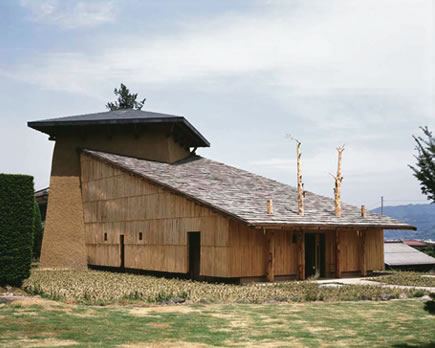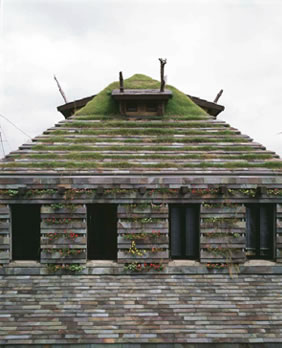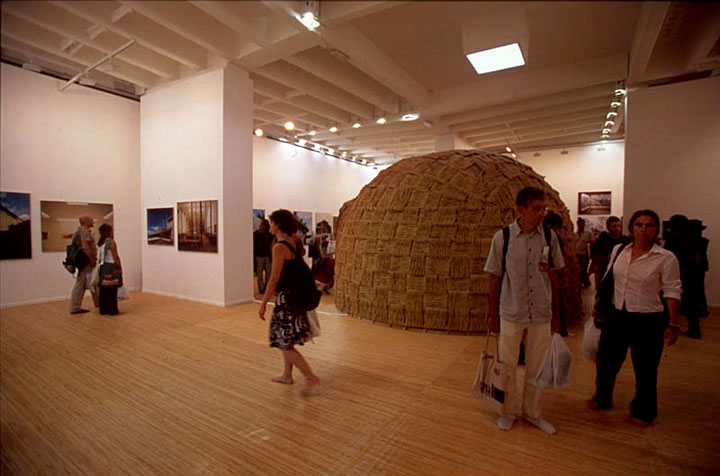 |
|||||||||
"It's nostalgic even though I've never seen anything like it before." Fujimori's "Primitive-Garde" Architecture
The architecture of Terunobu Fujimori - houses with real dandelions or leeks planted on the roof, a tea room like a bird house perched on tall tree trunks with the bark still attached - is extremely original. It combines new concepts quite different from those of conventional architecture with a sense of nostalgia that evokes memories of a distant past. The modernist architecture of the 20th century was functional and based on science and technology. It excluded a relationship with nature or historical and regional qualities and adopted an "international style," universal qualities that were thought to apply around the world and were promoted as the main direction of new architecture. Because of its mechanical, artificial, mass-produced look, however, modernist architecture took away the human face of the city. At a time when contemporary architects were engaged in a trial-and-error attempt to overcome the contradictions in this style as they groped toward the future, Fujimori was designing "architecture that advances toward the past," incorporating things that had been rejected by modern architecture, including traditional techniques surviving in rural areas. Fujimori's architecture is international but vernacular. It is not tied to any particular stylistic category but goes back to a time before there were nations, national peoples, and architectural styles. He participates personally in the construction process with the Jomon Company, a group made up of friends and benefactors.
This exhibition introduces all of Fujimori's architecture, ranging from his first building, the Jinchokan Moriya Historical Museum, to his most recent, the Nemunoki Art Museum, which is scheduled to open this April. The Dome Theater, woven from bamboo and rope, which was very popular in Venice, will be reconstructed here by the Jomon Company. Fujimori's goal is to "rethink the basic relationship between architecture and nature using natural materials and plants and get closer to the time when human beings first built the artificial structures known as architecture." This ideal is clearly reflected in the hand-built walls and roofs and samples of wood finishing. This is a site where Fujimori's architecture, which might be mistaken for imaginary architecture, is felt to be real.

Jinchokan Moriya Historical Museum, 1991
Terunobu Fujimori+Yoshio Uchida(Shusakusha)
photo:MASUDA Akihisa

Tanpopo House(Dandelion House), 1995
Terunobu Fujimori+Yoshio Uchida(Shusakusha)
photo:MASUDA Akihisa

instanation view at Venice
photo courtesy:The Japan Foundation
photo:MASUDA Akihisa